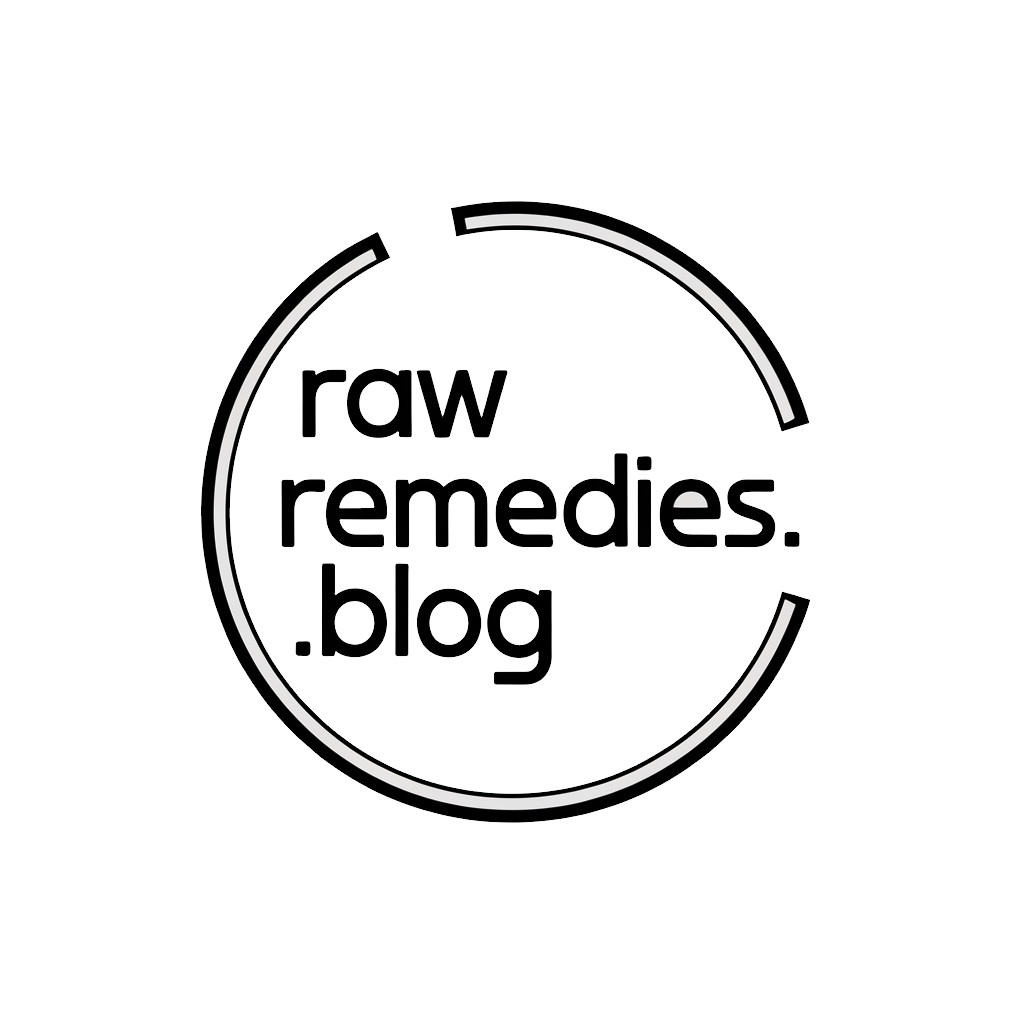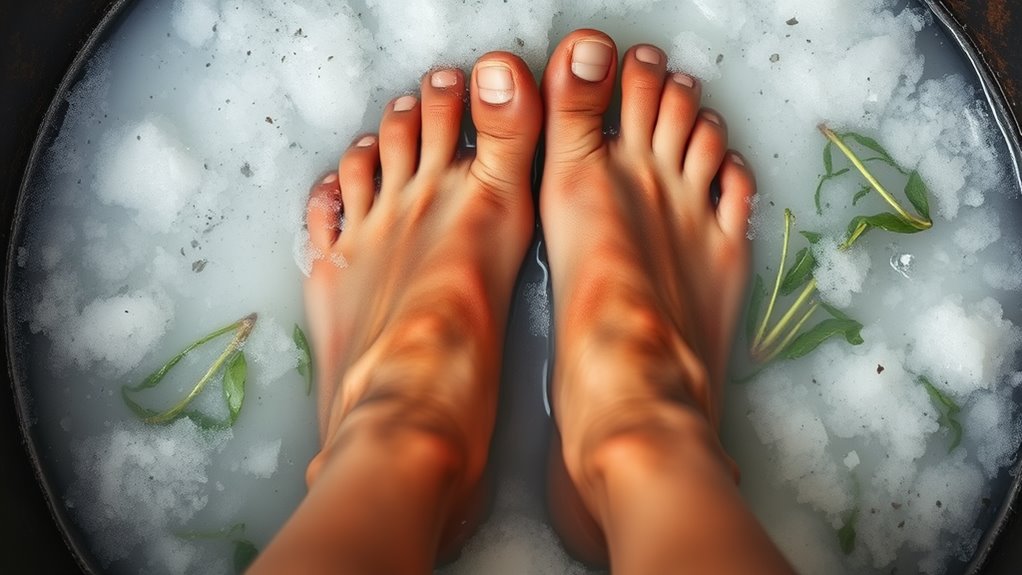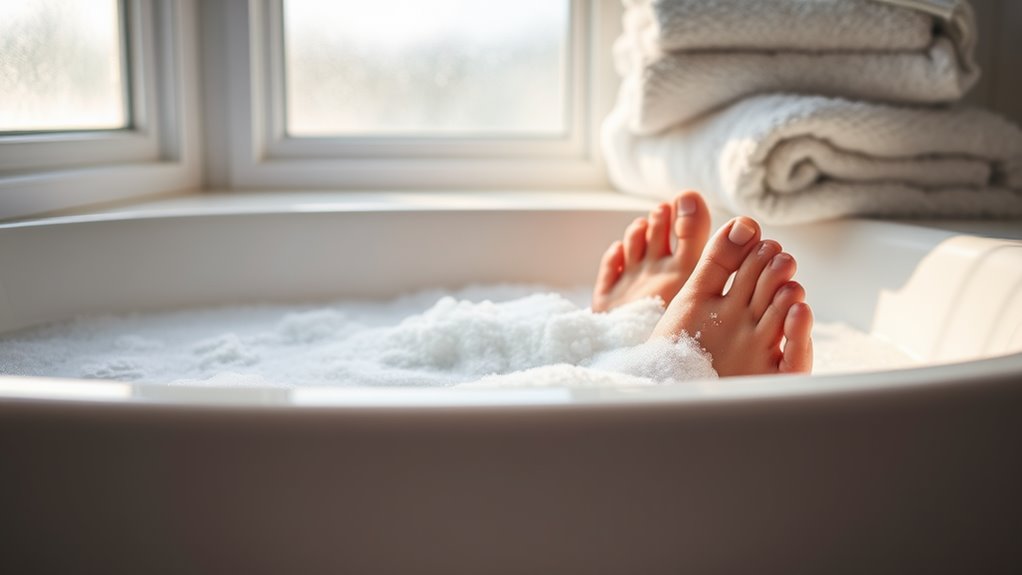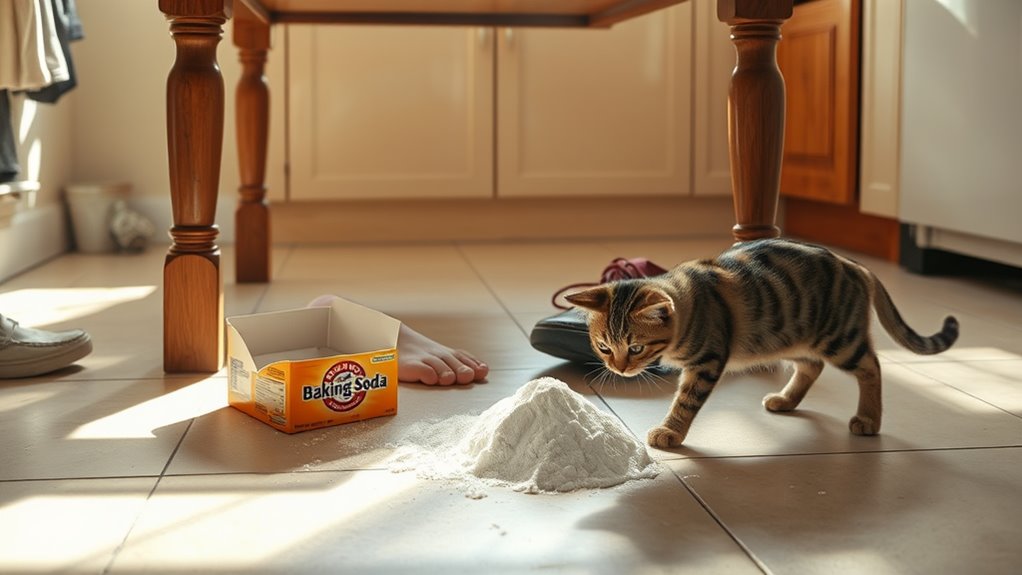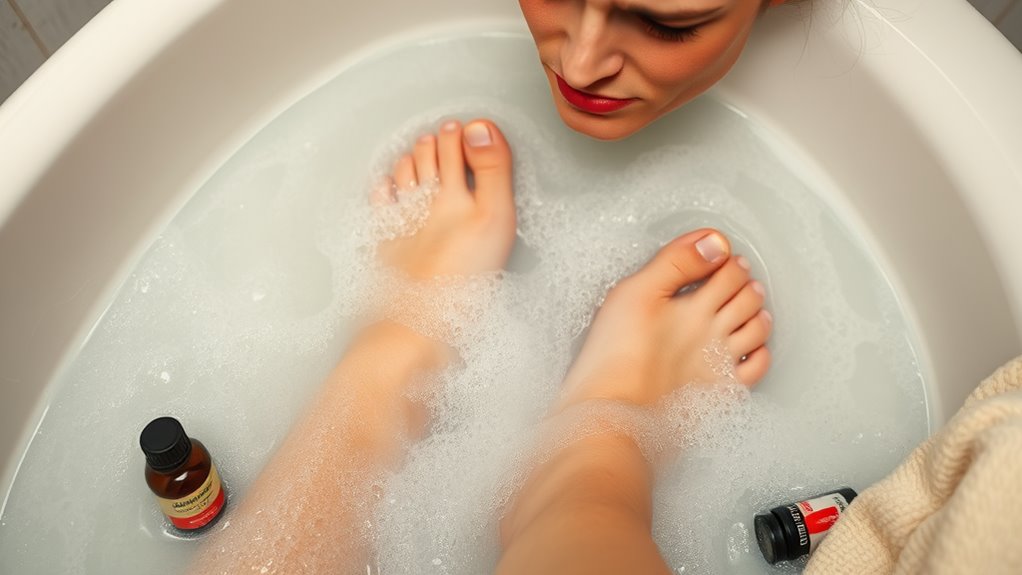This DIY Soak Eliminates Smelly Feet Naturally!
While commercial foot products often mask odors without addressing the root cause, you’ve got a simple DIY soak that naturally eliminates smelly feet for good. Combine key ingredients like tea tree oil and baking soda to tackle bacteria head-on, and you’ll notice fresher results fast. Stick around to uncover prevention tips that keep your feet healthy.
Key Takeaways
- Use a mixture of tea tree oil, baking soda, Epsom salt, and apple cider vinegar for a natural foot soak.
- Prepare the soak by adding 10 drops of tea tree oil, 1/2 cup baking soda, 1/2 cup Epsom salt, and 2 tablespoons vinegar to warm water.
- Soak feet in the warm mixture for 15-20 minutes daily to combat bacteria and odor.
- Pat feet dry after soaking and apply a natural antifungal cream for added protection.
- Maintain long-term freshness by rotating shoes, changing socks daily, and following this routine consistently.
Causes of Foot Odor
Foot odor typically arises when bacteria on your skin break down sweat and dead cells, creating an unpleasant smell.
Sweat glands in your feet produce moisture that bacteria thrive on, especially in warm, enclosed shoes.
Factors like infrequent washing, wearing the same footwear daily, and not changing socks regularly exacerbate it.
You’re at higher risk if you have conditions like athlete’s foot.
Understanding these causes guides you toward effective natural treatments for stinky feet.
It’s essential to address them promptly.
Additionally, baking soda’s properties can be harnessed in a simple soak to neutralize odors and maintain foot health.
A simple remedy like baking soda soak can naturally help combat foot odor by neutralizing bacteria and restoring balance.
Key Ingredients for the DIY Soak
To tackle smelly feet effectively, you’ll need a few simple, evidence-based ingredients for your DIY soak. Key ones include tea tree oil, with antimicrobial properties confirmed by studies to fight bacteria. Baking soda neutralizes odors by absorbing moisture and acids. Epsom salt reduces bacterial growth, as supported by research. Apple cider vinegar balances pH to prevent fungi, backed by clinical evidence. This combination ensures lasting freshness for your feet. By understanding the science behind unpleasant smells, you can enhance the effectiveness of this soak.
Preparing Your Natural Foot Soak
You’ll gather the key ingredients—tea tree oil, baking soda, Epsom salt, and apple cider vinegar—then mix them into a basin of warm water for an effective, evidence-backed soak.
Studies show these combat bacteria and odor.
- Use 10 drops of tea tree oil for its antifungal properties.
- Add 1/2 cup baking soda to neutralize acids.
- Incorporate 1/2 cup Epsom salt for detoxification, plus 2 tablespoons vinegar.
Additionally, this soak draws from the science behind foot odor to provide long-term odor prevention strategies.
Applying the Soak for Best Results
With your soak prepared, submerge your feet in the basin and maintain the water’s warmth for 15-20 minutes to optimize bacterial reduction, as studies confirm this timeframe enhances the ingredients’ antifungal effects.
Afterwards, pat your feet dry gently to remove excess moisture, which can harbor bacteria.
Repeat this process daily for optimal efficacy, as evidence from trials shows consistent application is key to reducing foot odor.
Benefits of Using Natural Remedies
You gain healthier foot care with natural remedies that reduce chemical exposure and support your skin’s natural balance.
You’ll embrace an eco-friendly approach by using sustainable ingredients that minimize waste and environmental harm.
These options save you money, letting you create effective soaks from items in your kitchen.
This method is similar to DIY teeth whitening practices that employ household ingredients for effective personal care.
Additionally, these natural foot care methods draw from cost-effective at-home solutions to deliver enduring benefits, much like addressing other common issues.
Healthier Foot Care
Natural remedies for foot care deliver key benefits by leveraging plant-based ingredients that gently combat issues like odor and infection.
This practical approach helps you maintain healthier feet by avoiding harsh substances and promoting natural healing processes.
Consider these benefits:
- You’ll experience less dryness and cracking as natural oils moisturize your skin effectively.
- It strengthens your body’s defenses against fungal infections with potent plant extracts.
- Regular use encourages you to adopt a proactive and consistent stance on foot hygiene, preventing future problems.
Eco-Friendly Approach
Beyond personal health gains, choosing natural remedies for foot care minimizes environmental harm by reducing reliance on synthetic chemicals.
You support sustainable ecosystems, as these ingredients biodegrade naturally without polluting waterways.
Studies show they lower chemical runoff, helping preserve soil health and biodiversity.
Cost-Saving Alternatives
Adopting natural remedies for foot care not only benefits the planet but also cuts your expenses over time.
You’ll find these options practical, evidence-based, and cost-effective for your daily routine.
- Save on ingredients: Use common items like vinegar and salt, costing less than $1 per use.
- Reduce purchases: Make your own soak, eliminating the need for repeated buys of commercial products.
- Enjoy long-term savings: Studies show natural remedies are as effective, avoiding hidden costs of synthetics.
Prevention Strategies for Smelly Feet
To prevent smelly feet, you must practice daily foot hygiene by washing your feet with antibacterial soap and drying them thoroughly to eliminate bacteria.
You’ll also benefit from choosing breathable shoes made of materials like leather or mesh, which allow air flow and reduce sweat accumulation.
These simple habits, backed by dermatological research, help you maintain odor-free feet effortlessly.
Daily Foot Hygiene
Maintaining daily foot hygiene is your first line of defense against smelly feet, as it removes bacteria and sweat that cause odor.
It’s a simple, evidence-based strategy backed by dermatological studies to curb bacterial growth.
- Wash your feet daily with antibacterial soap and warm water, scrubbing gently for at least 30 seconds.
- Dry your feet completely with a clean towel, focusing on the spaces between toes to prevent moisture buildup.
- Exfoliate dead skin weekly using a mild scrub to eliminate odor-trapping debris.
Choose Breathable Shoes
After focusing on daily foot hygiene, you can’t overlook the role of your shoes in preventing smelly feet; opting for breathable materials like mesh or leather lets air circulate, reducing sweat and bacterial buildup.
You should avoid synthetic fabrics that trap sweat, promoting bacterial growth.
Evidence-based studies confirm that breathable shoes decrease odor.
Don’t forget to rotate your shoes for optimal dryness.
Long-Term Foot Care Tips
Frequently, you’ll prevent recurring foot odor by adopting evidence-based habits like wearing breathable footwear and maintaining proper hygiene. For better results, consider using a natural scrub that targets keratosis pilaris to soften rough skin areas.
For sustained results, integrate these practical tips into your daily routine:
- Rotate shoes daily to ensure they dry fully, reducing bacterial growth.
- Change socks twice a day and opt for moisture-wicking materials to control sweat.
- Exfoliate feet weekly with a gentle scrub to remove dead skin and prevent odor buildup.
Additionally, for more effective exfoliation on rough skin, try incorporating a DIY Scrub using natural ingredients as part of your routine.
